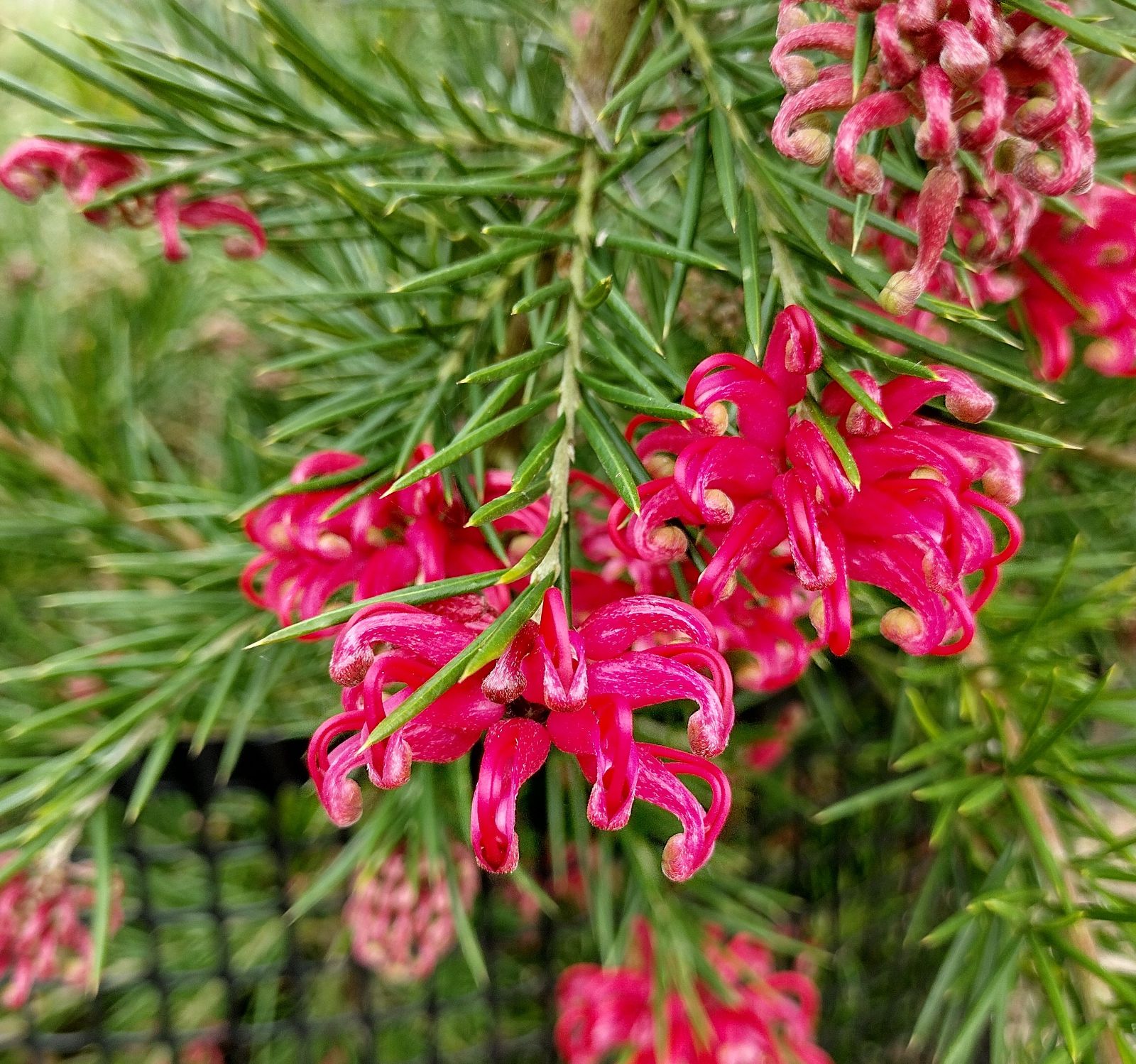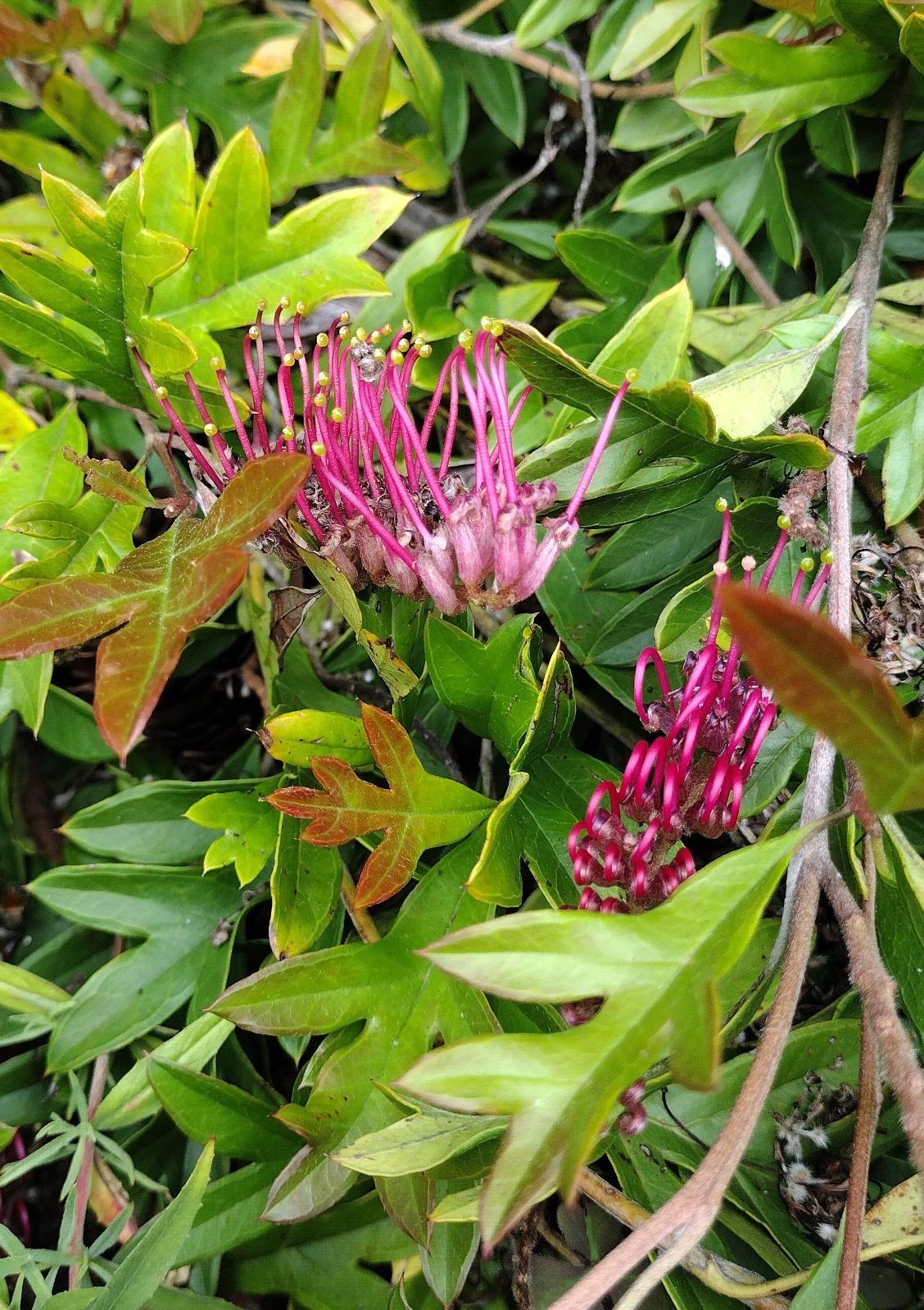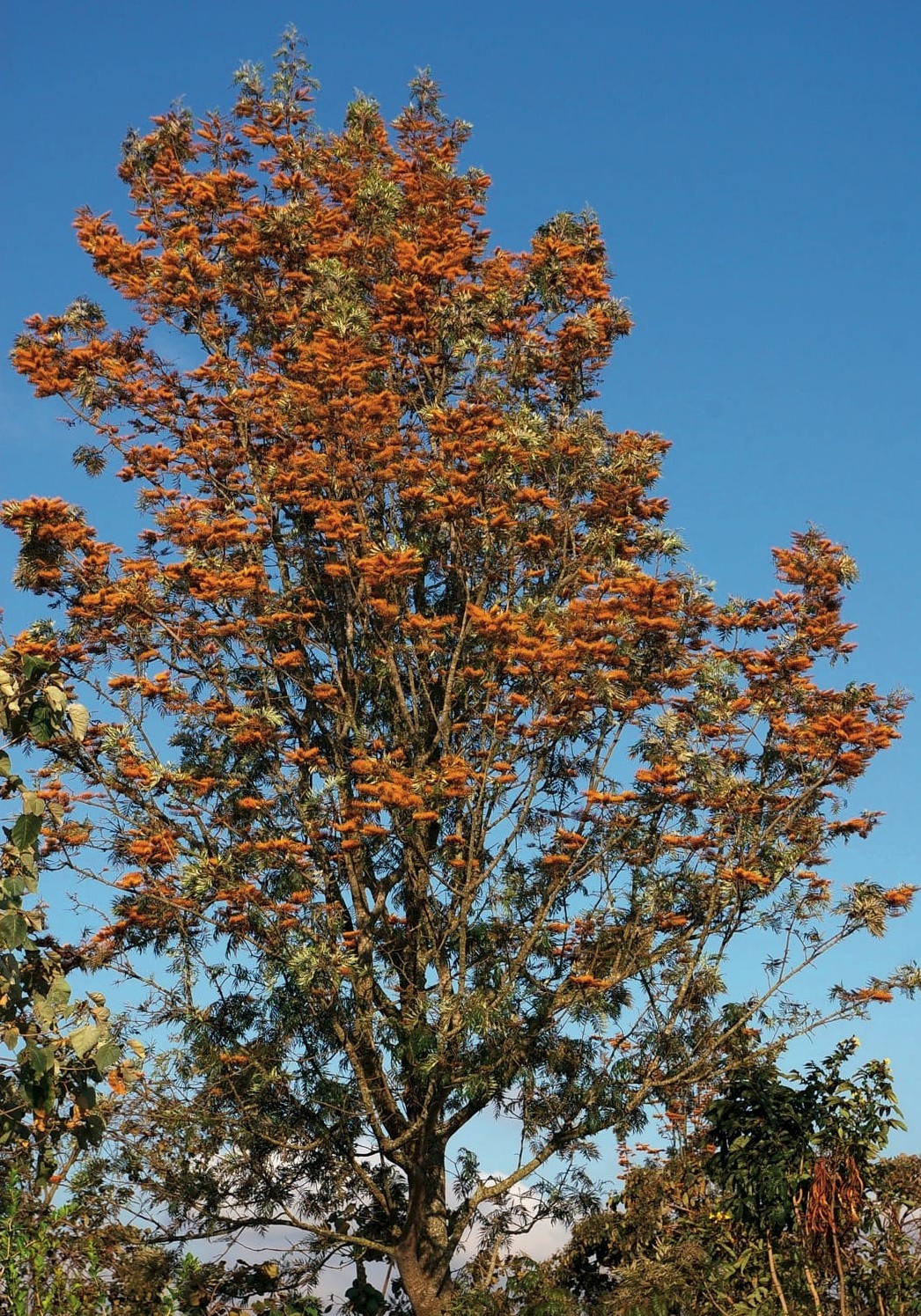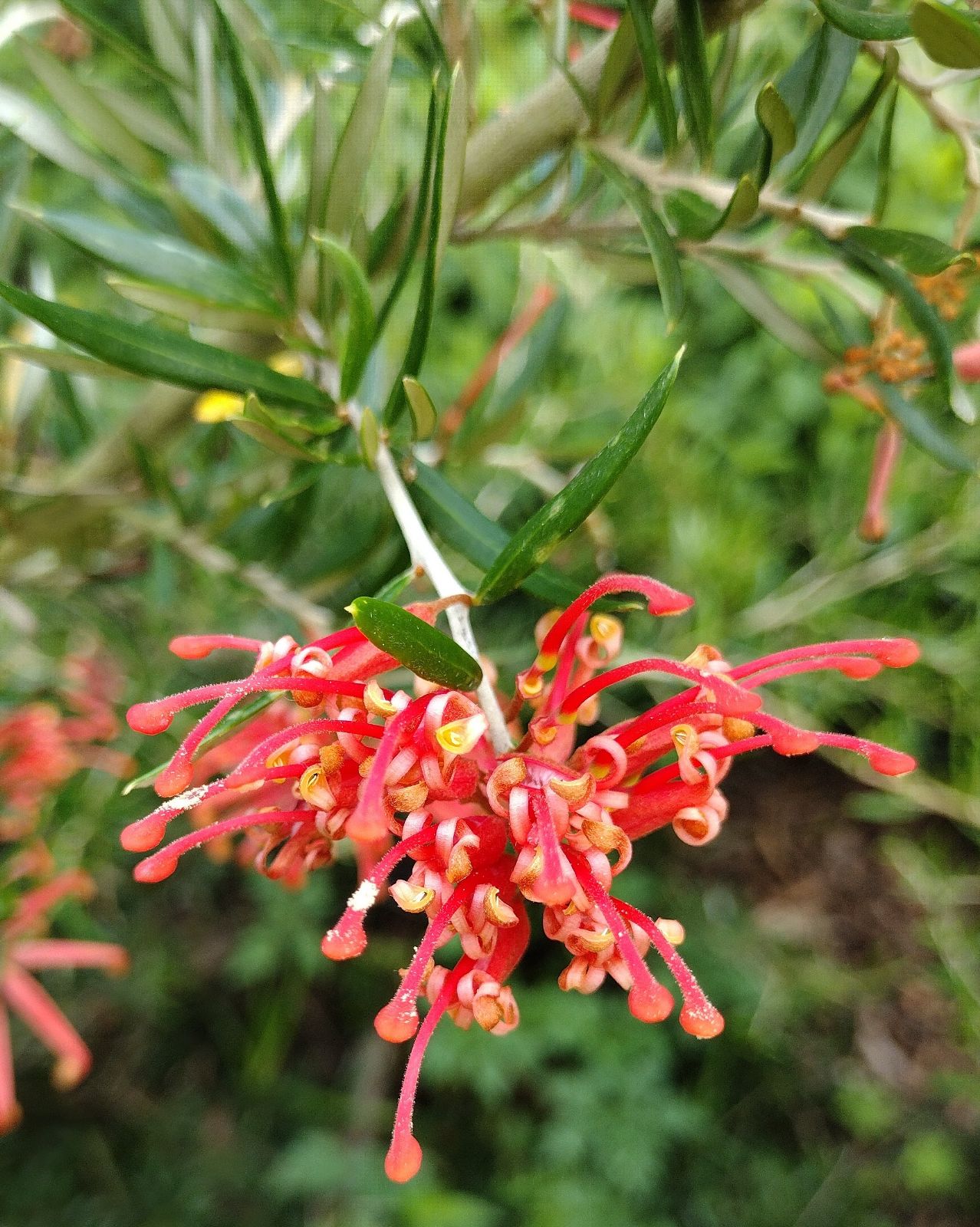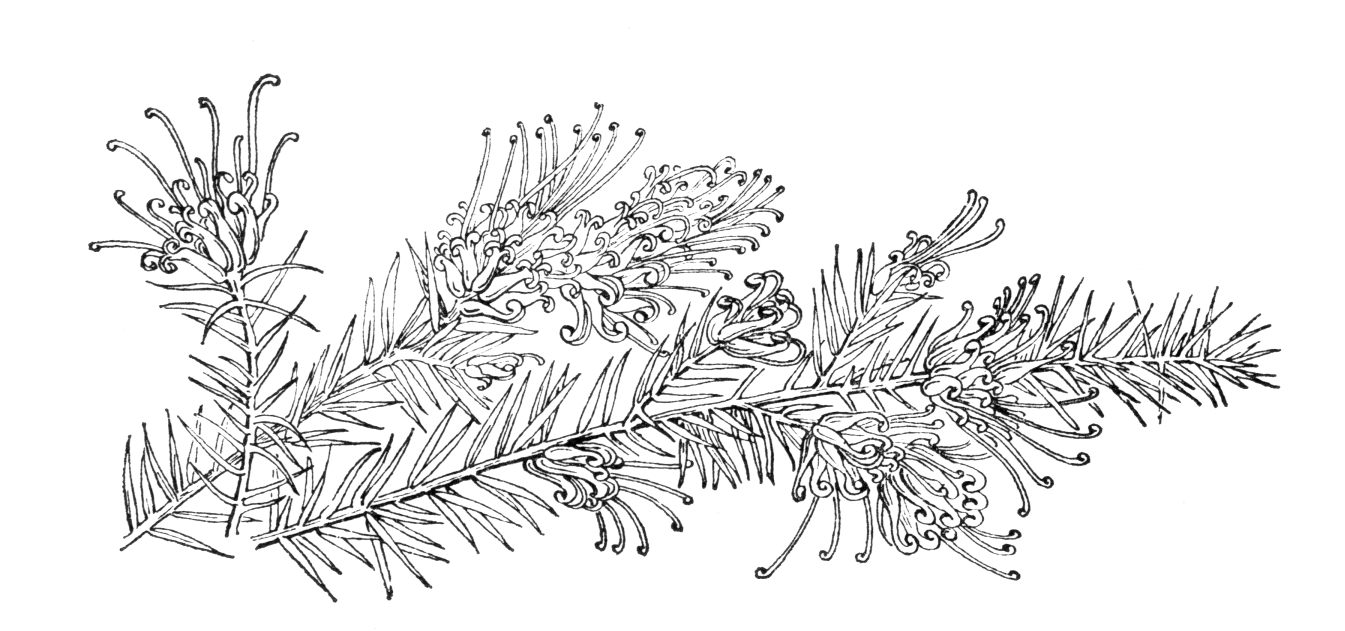Grevillea
Credits
Article from Bean's Trees and Shrubs Hardy in the British Isles
Article from New Trees by John Grimshaw & Ross Bayton
Recommended citation
'Grevillea' from the website Trees and Shrubs Online (treesandshrubsonline.
Family
- Proteaceae
Common Names
- Grevilleas
- Silky Oaks
- Spiderflowers
Makinson (2000) recognises 362 species of Grevillea and the vast majority of these are endemic to Australia (only seven species occur outside Australia, in New Guinea, New Caledonia and Sulawesi). They are usually erect or prostrate shrubs, but there are a few trees. The leaves are extremely variable; they may be entire, toothed or with up to three orders of division, and can be sessile or petiolate; leaf venation is pinnate or parallel. The inflorescences also are very variable in form. Common forms include ‘toothbrush’ (with flowers arranged along one side of the axis), ‘spider’ (the flowers in a rounded head, with the individual styles emerging from the centre like legs), and ‘brush’ (a conspicuous cylindrical raceme). The flowers are usually in pairs with a common bract. The flowers are 4-merous (rarely 3-merous); the tepals separate after anthesis to release the style; they may be glabrous or pubescent; the anthers are sessile and the style is extended. The fruit is a follicle or achene with one to two seeds, with or without wings (Makinson 2000).
Grevillea is one of the most important horticultural genera in Australia, with a great diversity of plant forms and shapes and colours of inflorescence. In addition to the species and their selections, an ever-expanding range of hybrids is available. Many Grevillea are being tested in the north temperate area and proving to be not only hardy but also extremely attractive. A very comprehensive account is provided by Elliot & Jones (1990), including detailed cultivation recommendations for all species.
Bean’s Trees and Shrubs
Grevillea
The remarkable family Proteaceae, which is almost wholly confined to the southern hemisphere, contains but few species that can be cultivated out-of-doors in the British Isles with any chance of survival, and many of these belong to Grevillea. This genus is most abundantly represented in the Australian subcontinent but extends to New Caledonia and the Celebes. The species described here show well the characteristic flower structure of the family. The floral envelope is not differentiated into calyx and corolla but consists of a perianth (‘calyx-tube’) made up of four valvate segments which are more or less united in the bud stage but separate as the flowers develop. The four stamens are placed opposite the perianth segments, and in Grevillea they are united to them, the anthers being sessile and inserted in the concave ends of the segments. The fruits in Grevillea are pod-like and contain one or two seeds.
Propagation is by means of half-ripened shoots taken about July, and placed in a frame with a little bottom heat. They enjoy a proportion of peat in the soil and are not suitable for limy soils.
The genus was named by Robert Brown in honour of Charles Francis Greville (1749–1809), once a Vice-President of the Royal Society, to whom the botanists of his period were ‘indebted for the introduction and cultivation of many rare and interesting plants’.
From the Supplement (Vol.V)
For a note by A. D. Schilling on the species grown in the open ground in Britain, see The Plantsman, Vol. 6 (3), pp. 134–6 (1984).

